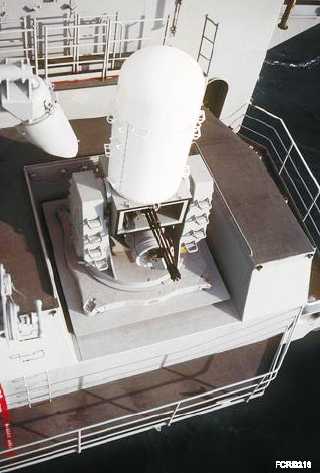SHIP SELF-DEFENSE SYSTEM (SSDS)
The principal air threat to US naval surface ships is
a variety of highly capable anti-ship cruise missiles
(ASCMs)(figure 2-17). These include subsonic (Mach
0.9) and supersonic (Mach 2+), and low altitude
ASCMs. Detection, tracking, assessment, and
engagement decisions must be made rapidly to defend
against these threats, since the time from when an
ASCM is initially detected until it is engaged is less
than a minute. SSDS is designed to accomplish these
defensive actions.
SSDS, consisting of software and commercial
off-the-shelf (COTS) hardware, integrates and
coordinates all of the existing sensors and weapons
systems aboard a non-AEGIS ship to provide Quick
Reaction Combat Capability (QRCC). (It will
eventually be installed on board most classes of
non-AEGIS ships.) SSDS (fig. 2-18), by providing a
Local Area Network (LAN), LAN access units
(LAUs), special computer programs, and operator
stations, automates the defense process, from the
detect sequence through the engage sequence. This
provides a quick response, multi-target engagement
capability against anti-ship cruise missiles.
The entire combat system, including the sensors
and weapons, is referred to as Quick Reaction Combat
Capability (QRCC), with SSDS as the integrating
element. Although SSDS broadens the ship’s
defensive capability, it is not intended to improve the
performance of any sensor or weapon beyond its
stand-alone performance. The primary advantage
SSDS brings to the combat systems suite is the ability
to coordinate both hard kill (gun and missile systems)
and soft kill (decoys such as chaff) systems and to use
them to their optimum tactical advantage.
The following systems represent the SSDS
interfaces for a non-AEGIS ship:
AN/Air Search Radar
AN/Surface Search Radar
AN/Electronic Warfare System
Centralized Identification Friend or Foe (CIFF)
Rolling Airframe Missile (RAM)
2-12
Figure 2-16. —CIWS radome with search and track radar.
Figure 2-17.—Missile launch from an AEGIS class cruiser.




